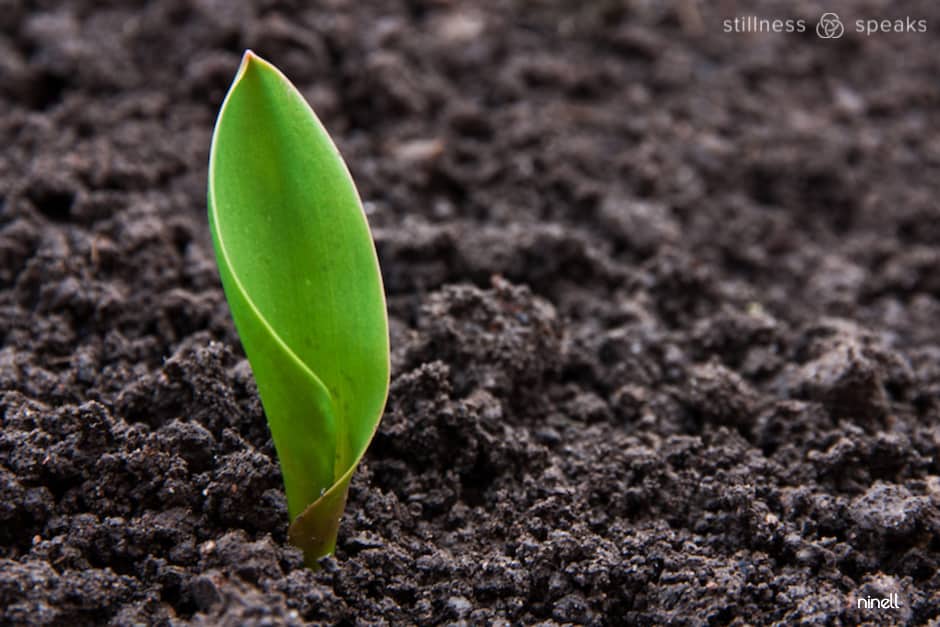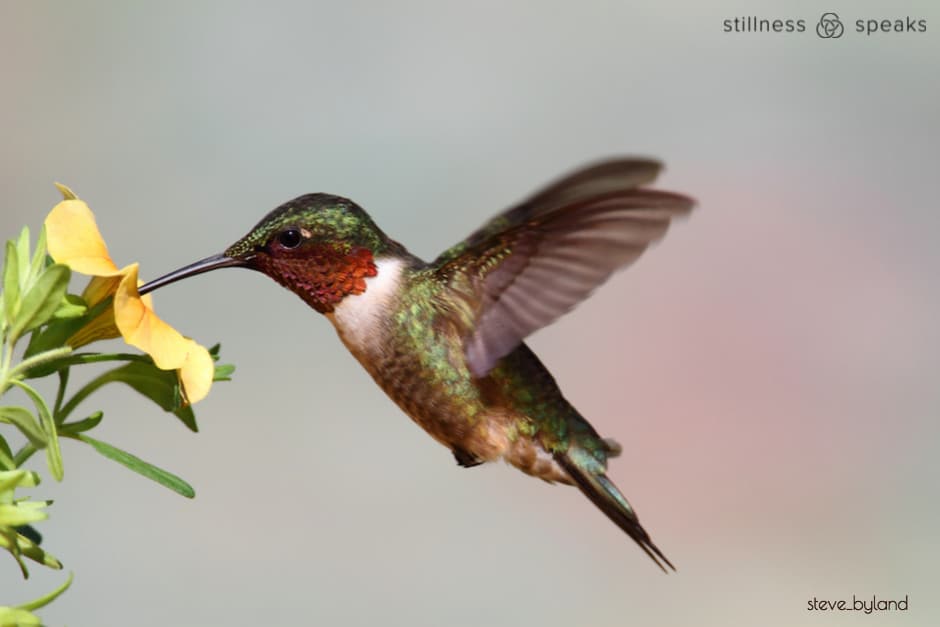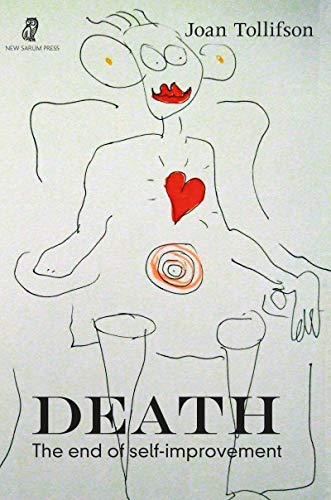self-improvement: “… the best place to begin any kind of change is always with simply being aware of how it is right now …” ~ Joan Tollifson
“Eternity isn’t some later time. Eternity isn’t a long time. Eternity has nothing to do with time. Eternity is that dimension of here and now which thinking and time cuts out. This is it. And if you don’t get it here, you won’t get it anywhere. And the experience of eternity right here and now is the function of life.” ~ Joseph Campbell
Indeed, Joseph Campbell, is demystifying the “elusive obvious” … the simple yet profound “key” to genuine transformation is right here, right now … all traditions speak of this – each in their unique expression … the essence is the same: embrace what is! … deeper and deeper … then even deeper
So, today in Part 7 of this series, we continue Joan Tollifson’s deep dive into “embracing what is” (that began with Embracing What Is – Beyond Self Improvement) … by looking at inherent challenges or “traps” in self-improvement – even the phrase “self-improvement” is problematic … or the perplexing tale of the “elusive obvious” 🙂 …
Scroll to the bottom of the post for the background of this series and a summary of Parts 1 through 6 … plus the full attribution of the source for this content – graciously provided, for our use, by Joan … for which we are very grateful.
But before taking this deep dive …
India is undergoing a humanitarian crisis brought upon by the ravaging resurgence of COVID-19 … we are providing THREE vetted sources that can be used to help provide relief to India … we have donated personally and also as Stillness Speaks to PATH, CARE, and some of the GoFundMe campaigns below …
Despite the financial challenges that are amongst us all, if your situation allows you to donate then please visit one of the following sources … and contribute whatever is possible …
… Deliver oxygen where it’s needed the most through PATH – a global team of innovators working to accelerate health equity so all people and communities can thrive …
… Provide essential hospital services, more health workers, additional beds, oxygen supply, and much more through CARE (and their CARE India chapter) – for 75 years, CARE has led the way to a better life for the world’s most vulnerable people ….
… Donate to India COVID-19 fundraisers on GoFundMe – all fundraisers have been verified by GoFundMe’s Trust & Safety team and will be updated as new fundraisers are created and verified. All GoFundMe fundraisers are backed by the GoFundMe Guarantee which ensures that all funds on this page will go to those affected by India’s COVID-19 surge …
Helping those in extreme need is the “order of the day” …
THANK YOU!
Now back to the continuation of Joan’s in-depth exploration of “embracing what is” …
Self-Improvement: The Challenge of Genuine Transformation
“… Self-improvement is primarily thought-based, while genuine transformation emerges from aware presence …”
Life is a kind of balancing act in a way, between the recognition that everything is perfect just as it is, and the impulse or aspiration, which is part of this perfection, to grow and transform. If we pay attention, we can begin to feel the difference between misery-inducing self-improvement and what we might call healthy aspiration, genuine transformation or true happiness. There are no rules for precisely where one ends and the other begins. And in the absolute sense, everything is equally an expression of unicity, including misery-inducing self-improvement and the illusion of personal will. But on a functional and relative level, just as we can distinguish apples from oranges, we can distinguish what we might call healthy aspiration or genuine transformation from the kind of misery-inducing self-improvement that is itself a manifestation of the very problem it is trying to solve.
Self-improvement is always focused on the future, while true happiness is only ever found Here-Now. Self-improvement begins with the rejection of this-Here-Now, while healthy aspiration begins with the embrace of what is. Self-improvement is endless postponement. The finish line is never reached. Genuine transformation is the recognition that waking up only happens Here-Now. Self-improvement is rooted in a sense of lack and deficiency, whereas true happiness understands that the defect is an essential component of perfection. Self-improvement wants one polarity to triumph over its opposite, which is never going to happen, while genuine transformation recognizes the inseparability and collaborative necessity of both apparently opposing forces.
Self-improvement is oppositional and violent. It thinks in terms of fighting cancer, waging a war on drugs or a war on terror, killing the ego, vanquishing thought. Genuine transformation comes from unconditional love. It has no enemies. It recognizes everything as the Beloved. It sees only God everywhere. It embraces everything, recognizing everything as itself. What we resist tends to persist because by resisting it, we are validating its reality and giving it power. The more we oppose and vilify something, the stronger, more defensive and aggressive it seems to become. Not resisting doesn’t mean staying in an abusive relationship, being a doormat or not taking action to correct an injustice. It is pointing to something much more immediate, a way of being in this very moment that allows intelligent action to emerge. You can treat cancer without fighting it, and it is only the ego that wants to kill the ego.
Self-improvement is rooted in the illusion of an imaginary self with free will and choice trying to control and fix a separate and enduring “thing” that doesn’t actually exist, whether that imaginary “thing” is “me” or “you” or “the world.” Genuine transformation moves from wholeness and recognizes that whatever is appearing Here-Now is the Only Possible in this moment.
Happiness arises from a fundamental trust or faith in the Way It Is (the Tao), while self-improvement moves from fear and insecurity. When I speak of trust, I don’t mean trusting that things will go my way, but trusting that whatever happens, all is well in the deepest sense. This isn’t a belief—it’s a faith that emerges from presence.
Self-improvement inevitably ends in disappointment, because it is the nature of form to break down and fall apart. Genuine transformation begins from the recognition of what is beyond any particular form and yet completely present as every form. It points to a freedom and joy that isn’t dependent on outcomes.
Self-improvement is rigid and perfectionistic, driven by beliefs, expectations and old answers, while genuine transformation is exible, open to new discoveries and rooted in not-knowing. Genuine transformation listens for what life itself wants, while self-improvement imagines that “I” know how everything “should” be. Self-improvement is judgmental, self-righteous and narrow-minded, while happiness and real change are the release of all that.
Self-improvement is primarily thought-based, while genuine transformation emerges from aware presence. Thought divides; awareness joins. Thought is dualistic; awareness is nondual. Of course, there is a place for intelligent thinking—reason, intellect and analysis are marvelous tools. I’m not in any way disparaging thinking. I have great appreciation for the scientific method and for human reason. But awareness is upstream from thought. And in many situations, thought is the wrong instrument.
There is a place for healthy aspiration and intention, for creative imagination and visualization. Social change work of any kind obviously relies to some degree on our ability to identify what causes suffering and to imagine a different possibility. There is no exact or fixed line where that healthy and functional use of memory, imagination and thinking crosses over into a painful obsession. But we can become more and more sensitive to where we are coming from when we envision or work toward a change in ourselves or in the world. We can begin to feel the difference between perfectionistic self-improvement and genuine transformation, between self-righteousness and love. And we can recognize that the best place to begin any kind of change is always with simply being aware of how it is right now.
Otherwise, it’s easy to wind up recreating and reinforcing the very problems we are trying to solve. When we fail to go all the way to the root of our problems, we often end up reproducing the original problem in a new form. We’ve seen this in many political revolutions, in various technological developments that have had unintended consequences, and in spiritual practices that end up reinforcing the root illusions. We easily end up digging ourselves into deeper and deeper holes. Humanity is now on the verge of wiping itself off the face of the earth, all because we have made one well-intended “improvement” after another.
How would it be to not know how we or the universe or this moment “should” be?
Patterns of thought are deeply conditioned and, as we grow up, we begin to think that we actually are the voice in our heads, the thought-stream, and we come to believe that whatever this voice says is reliable and true, and that we are somehow authoring our thoughts as well. We even begin to think that there is nothing outside of thought, that thinking is the primary reality. “I think, therefore I am.” We are easily hypnotized and entranced by our thoughts.
One of the reasons I feel insight meditation is helpful, or a process such as The Work of Byron Katie, or many intelligent forms of psychotherapy, is that recognizing thoughts as thoughts is not always as easy as it sounds, and realizing that there is so much here other than thought—as obvious as that seems once it’s obvious—can be surprisingly elusive. It is, as they say, the open secret, hidden in plain sight, the elusive obvious.
We can argue over whether thought is causative of emotions and behaviors or whether it is simply an aftereffect of what originates below the level of conscious awareness. I suspect both perspectives are true, each perhaps more so in some instances than others. Clearly, waking up isn’t only a matter of questioning our thoughts and beliefs but, in my experience, that’s an important element.
Bringing awareness to the body, feeling sensations, tuning into aware presence in a way that is non-conceptual and not thought-based is the other part of the equation—opening up to the non-conceptual immediacy of the sensory-energetic actuality Here-Now and recognizing the boundless awaring presence that we are and that everything is. And that can happen in many different ways.
~ Joan Tollifson
This multi-part series is an exploration of Joan Tollifson’s book Death: The End of Self-Improvement … where she talks about the “only actuality there is” … the “aware presence in which the whole universe is contained” … that which has “no beginning and no end” … the “ever changing process inseparable from everything else in the universe” … that which is “gone forever and {always/still} right here” …
… Part 1 was the entire opening chapter Dissolving … and
… in Part 2 (excerpts from chapter one titled Stepping Through the Mirror) Joan explored death by talking about … That which “cannot depart from itself ” … the “felt spacious openness at the very core of our being” … and more.
… in Part 3 (the ongoing excerpt from Stepping Through the Mirror) Joan delved deeper into awakening .. or what she terms unbroken wholeness : “… the ever-present actuality … To awaken is to recognize the sacred everywhere, to live in devotion to this luminous presence, to wake up again and again from the dream of what we think is happening …”
… In Part 4 (the concluding excerpt from Stepping Through the Mirror) Joan considers the “natural next” question of what happens after death? … and addresses the subject of near-death experiences, reincarnation, and memories of past lives
… In Part 5 (excerpts from the chapter Beyond Self-Improvement: Embracing What Is) Joan begins an in-depth exploration into “embracing what is” : “… true healing, transformation and liberation begin with the simple acceptance of this moment and this world, just as it is … embracing imperfection, allowing everything to be as it is, loving what is—this is the gateless gate to a fresh start and the utterly new. Oddly enough, this is the secret of freedom …”
… In Part 6 (more excerpts from the chapter Beyond Self-Improvement: Embracing What Is), Joan continues her in-depth exploration of “embracing what is” by diving into the story of “me” – the story of “choiceless choice” …
All italicized text is from Death: The End of Self-Improvement by Joan Tollifson and is published here with her (and the publisher New Sarum Press’) generous permission.
Here are all of Joan’s posts on Stillness Speaks … and her website – full of deeply insightful and valuable content for your journey.
Stay tuned for more … as Joan concludes her in-depth exploration of “embracing what is” … in the next post …
All italicized text above (except for the Go Fund Me related text) is from Death: The End of Self-Improvement by Joan Tollifson and is published here with her (and the publisher New Sarum Press’) generous permission.






 This multi-part series is an exploration of
This multi-part series is an exploration of 





